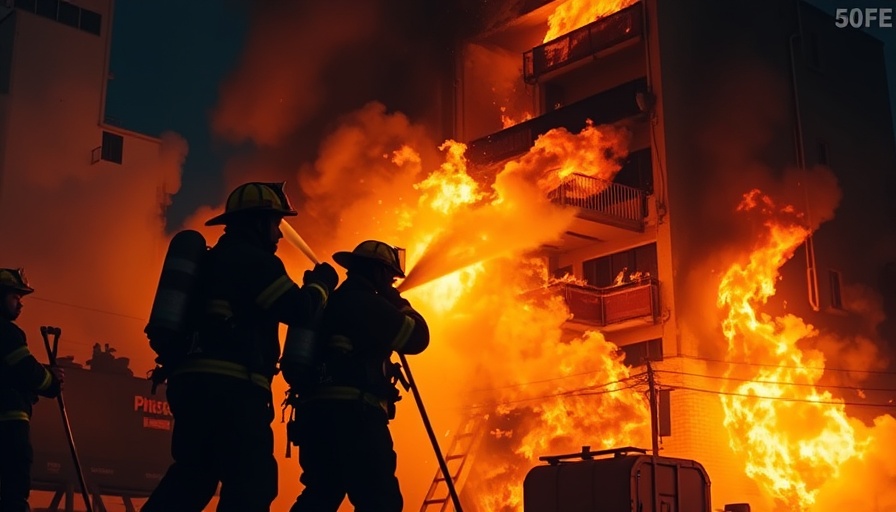
A Catastrophic Connection: From Lachman Fire to the Palisades Inferno
The recent arrest of Jonathan Rinderknecht, a 29-year-old man from Florida, for allegedly igniting the Lachman fire has intensified scrutiny on the Los Angeles Fire Department (LAFD) and its firefighting strategies. This incident, which was revealed through a federal criminal complaint, shows how a seemingly extinguished fire quickly reignited and contributed to what would become the most devastating wildfire in Los Angeles history, known as the Palisades fire. This fire burned for 25 continuous days, ultimately destroying over 23,000 acres and claiming 12 lives.
On New Year’s Day 2025, the Lachman fire, set intentionally, was quickly subdued by firefighters. However, unbeknownst to them, smoldering embers remained buried underground, leading to a rekindled blaze as fierce winds swept through the area on January 7. The thread connecting these two fires raises essential questions about reported firefighting protocols and preparedness for the subsequent catastrophe.
Questions of Accountability and Preparedness
The details surrounding Rinderknecht's actions shine a light not only on arson but also on the decisions made by LAFD during the earlier blaze and how they may have influenced the later devastation. As the authorities launch a comprehensive investigation, the burning question remains: Could the response to the Lachman fire have been more decisive? Experts emphasize that firefighters routinely monitor areas prone to re-ignition for days or even weeks after a blaze. In hindsight, many residents and officials believe that LAFD’s response did not meet this standard, given the catastrophic winds predicted for January 7.
Firefighters faced immense odds during the Palisades fire. With strong winds pushing flames aggressively, crews on the ground and in the air fought valiantly. However, community members and fire experts alike have expressed concerns that inadequate resources were allocated to the initial Lachman fire, which might have prevented the widespread disaster.
The Ripple Effect on Fire Safety Protocols
While Rinderknecht's alleged actions are unequivocally condemnable, the situation presents an opportunity for reflection on fire safety protocols. Given the severity of growing wildfires in California, there may now be renewed pressure on city officials and firefighting agencies to revisit their operational strategies. A recent report from the LAFD suggests a future of enhanced leadership protocols, ensuring better communication and resource allocation in fire emergencies. Such reviews may redefine how the department responds to wildfires.
Local Reactions: A Community in Mourning
The emotional aftermath for residents of Pacific Palisades has been palpable. Words like “shock” and “anger” echo in conversations as they remember the loss of homes and the uncertainty stemming from their safety. For Blake Armstrong, whose home was among the first to be consumed by the flames, learning about the arson suspect was a bitter surprise. Residents continuously reflect on their experiences, trying to reconcile the chaos of that week with the response by local agencies.
Local survivor, Denise Doyen, observed firsthand the unpredictable winds that wreaked havoc on homes. “They did a great job, but it was impossible odds against such winds,” she recalls, illustrating the challenging dynamics firefighters faced in trying to maintain control.
Call for Change and Reflection
The implications of the Palisades fire stretch far beyond the immediate destruction. Following not only a criminal investigation but also a potential redesign of firefighting operations, lessons from this tragedy can foster a more comprehensive approach to wildfire management in California. As discussions about accountability and preparedness unfold, it's imperative that local leaders address shortcomings to offer a safer future for their communities.
Ultimately, the devastating reality is that this catastrophe may have been partially preventable if underlying patterns of communication and resource allocation had been improved. The residents of Pacific Palisades continue to seek closure and answers in the wake of loss, with a community now actively involved in advocating for changes in how wildfires are managed.
What Can We Learn?
For those living in fire-prone areas, it’s crucial to remain proactive about personal safety and preparedness strategies. Engage with local fire safety programs and stay updated on resources for emergency protocols. While the Palisades fire serves as a severe reminder of nature’s unpredictability, understanding its causes and implications can empower communities. Prioritizing fire awareness education and developing contingency plans can become vital steps in safeguarding both lives and properties in the future.
 Add Row
Add Row  Add
Add 



Write A Comment